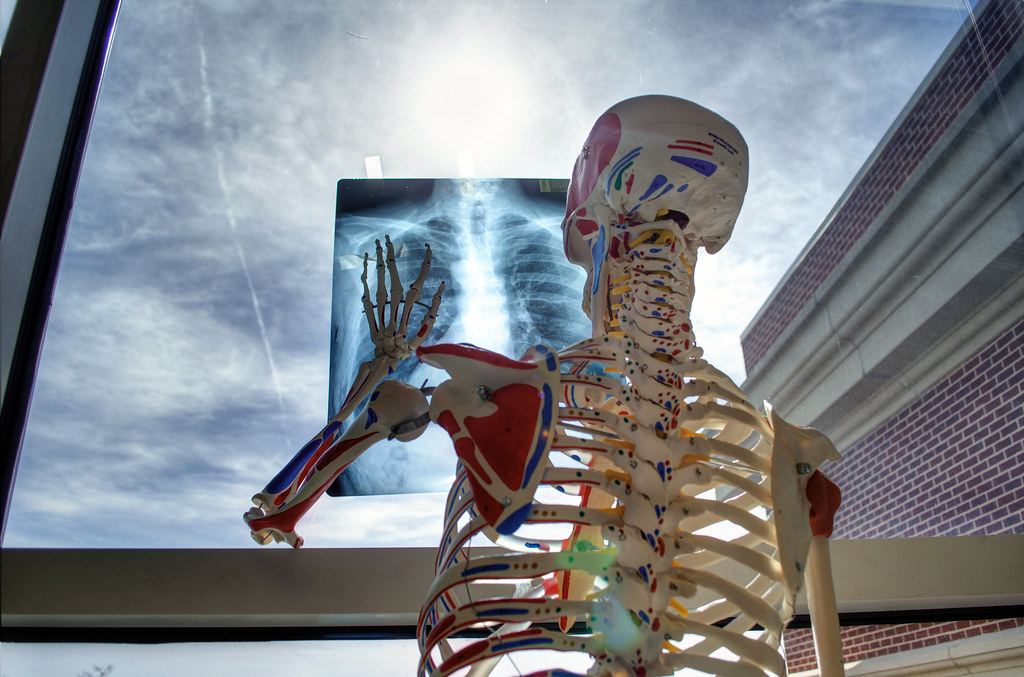Engineered tissues: Increasing efficiency in healthcare and drug development
Professor Alison McGuigan sheds light on how engineered tissue can facilitate drug development.
Canada’s population is an aging one. With 14 per cent of the population being older than 65 in 2016, it’s expected that this number will increase to 22.5 per cent by 2030. That’s good news for us, right? Well, while that can be good, it’s still important to account for the fact that this may disproportionately affect our healthcare system.
Professor Alison McGuigan from the University of Toronto discussed her work on artificial tissues during the Department of Engineering’s Skule Lunch & Learn event on November 8, 2023. Currently, cross-appointed by the Department of Chemical Engineering & Applied Chemistry and the Department of Biomedical Engineering, Professor McGuigan’s research focuses on regenerative medicine. More specifically, she focuses on developing advances in health technologies that can help regenerate damaged or diseased tissues.
“What really is one of the key problems that motivates us is that the Canadian population is aging,” Professor McGuigan explained, “it’s already producing healthcare expenditures that are becoming quite unmanageable.” This is because drug development is inevitably expensive given the process is usually very long and complex, spanning more than 10 to 12 years at a minimum.
As scientists identify a compound that they believe could have therapeutic effects, they experiment with it to test whether it could help halt the progression of a disease or improve its symptoms. But it doesn’t end here. The compound must then be tested for side effects, usually through animal models. Clinical trials are then put in place to ensure the product is safe for human beings. Chances are, however, that some side effects will be noted. Along the way then, some compounds don’t reach the market, raising the costs of drug development. “So, this 1.7 billion is for one drug. But when you take account of the drugs that don’t actually make it to market, it’s more like 10 billion to develop one drug,” elaborated Professor McGuigan.
Towards the end of the process, she noted, the next two phases examine the drug’s efficacy. This can involve the use of animal models as well as chemical experiments. The latter are usually simple systems in plastic dishes, in which they can grow cells in 2D. This is beneficial because scientists can work to optimize their chemistry. “We need all these steps to make sure that we’re developing a compound that is effective and safe. We can’t really take out any of these steps,” explained Professor McGuigan.
However, she acknowledged that the process can still feel inefficient, and consequently, overly expensive. Professor McGuigan shared that the models used are not usually accurately predictive of what would happen in humans. Had they known what would cause the drug to fail in earlier stages, predictions would be more accurate and money and time could be saved. “The reason is that cells are kind of like people. They care what environment they’re in and who their neighbours are.” For example, McGuigan noted that we don’t behave the same in the office versus the nightclub. “When you take a cell out of one environment and put it in another, it’s going to behave in a very different way. And that is a problem with these models because tissues are not 2D plastic surfaces where the cells really are only connecting in one dimension.”
That said, models using 2D plastic dishes are advantageous because they’re easy to analyze. As such, Professor McGuigan explained that about 10 years ago, her lab started to think about this problem in detail. They started considering ways to design a tissue for drug testing, balancing biological complexities with ease of analyzability. “The goal of my lab is to be smart about how we engineer these tissues,” noted Professor McGuigan. “The general principle is that you have a patient, and you take some kind of sample material, so that might be a tumour cell or fibroblasts from the skin, that you can reprogram with certain protocols to make it into an induced pluripotent stem cell,” she elaborated. By amplifying certain protocols, they can create more tissues such that their texture resembles cells in the human body. Once the tissue is assembled, they can examine its behaviour with the goal of using it in healthcare settings.
One of the most profitable applications of these systems is in predicting drug toxicity, like cardiac, liver, and kidney toxicity. But Professor McGuigan noted that it may also prove useful when considering environmental toxins. “In thinking about environmental toxins, as we generate lots and lots of new materials, we don’t know how toxic they are, we don’t know how they are going to impact human health. So, you know, these systems could give us some clues.”
These tools also help identify new drug targets and their therapeutic effect. It may even help compare two drugs to see which one a patient is more likely to respond positively to. In the future, these innovative models may also help understand the risks of developing a certain disease and predict disease progression.
In her lab, Professor McGuigan has focused on cancer tissues, skeletal muscle, and adipose tissues. Cancer, she argues, tends to best exemplify the strength of the engineered tissues. For example, they explore biomarkers. “It’s really maybe a pattern of genes or some kind of feature of the tumour that predicts how the disease will progress,” shared Professor McGuigan. Cancer constitutes 25 per cent of yearly deaths in Canada, emphasizing the clinical need to explore the disease.
As such, she stresses that there seems to be a significant need for such systems using engineered tissues. The hope is that the clinical data gathered will be more predictive. With this reduced failure, the drug development process and the healthcare system altogether could become more efficient. “I think that these tissue models really have the potential to accelerate drug discovery [….] The goal, really of all this, is to try to develop and deliver the right drugs, the good drugs that are effective to people that will benefit from them and to make the healthcare system much more efficient,” Professor McGuigan concluded.
Features Editor (Volume 49) | features@themedium.ca —Maneka is a third year student completing a specialization in Philosophy with a minor in political science. Previously, she served as one of The Medium’s Staff Writer and Associate Features Editor. As this year’s Features Editor, Maneka hopes to raise awareness, shed light over current issues, and highlight student voices and organizations. When Maneka is not studying, writing, or working, you’ll probably find her binging on, or rather re-watching her favorite shows, listening to music, thinking about her dog, or likely taking a nap.


